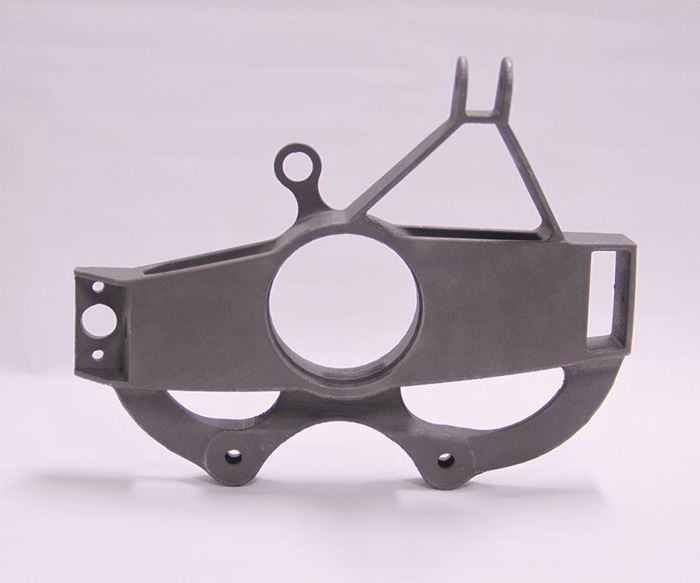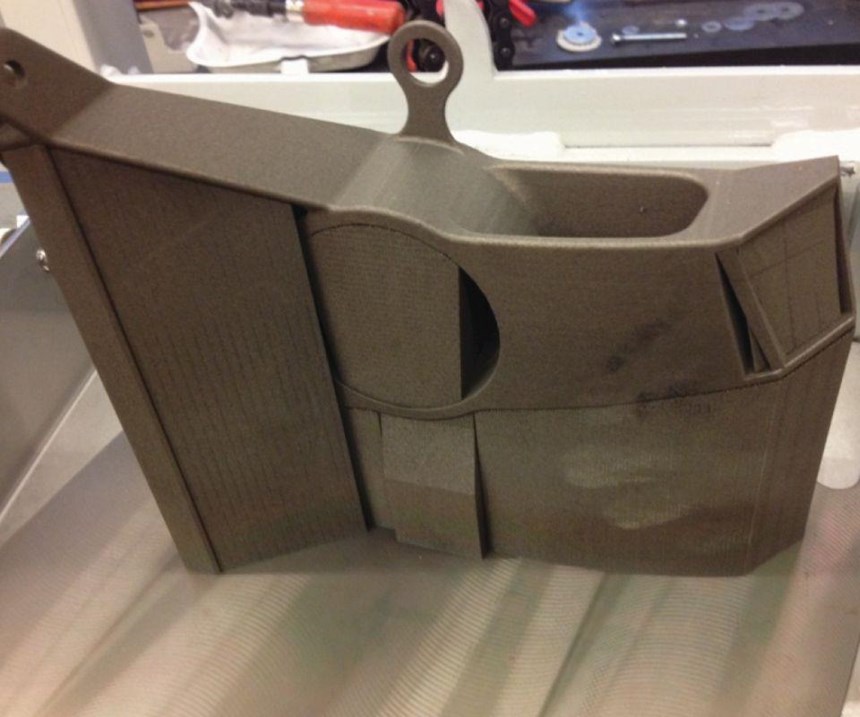Wanted: Flexible Shops and Open-Minded Pros
AM is more complicated than the hype implies. It needs creative people to advance its adoption in this industry.
Share


We have all read the hype: You can 3D-print anything you want. Complexity is “free” when using 3D printing. Additive manufacturing is going to put machining facilities out of business. And so on.
Anyone who has actually seen and worked in additive manufacturing—the layer-by-layer fabrication of end-use parts—quickly realizes that the hype is much different from the reality. The reality is that AM is complicated, and we need agile and flexible machining facilities, along with creative and open-minded machining professionals, to help advance the technology and spur its adoption by the industry. Here’s why:
Consider the part pictured above, a component for the front suspension of a Formula SAE race car designed and built by students at Pennsylvania State University. The part is made of titanium, Ti-6Al-4V to be exact, and was designed and optimized by Vincent Maranan, an undergraduate honors student working with Dr. Todd Palmer, a colleague of mine in the materials science and engineering department. Vincent was able to use readily available design, analysis and optimization codes to lightweight the part, which was then 3D-printed on a laser-based powder-fed fusion system, a common AM process for printing fully dense metal parts.
Additively manufacturing this intricate geometry is relatively easy. The machine does not care whether it is “printing” a solid part or a complex lattice; it just tells the laser where to melt the material (a very fine powder in the case of powder-bed fusion systems) so that it solidifies into a solid part. There are numerous caveats, as one might guess, and the most important one—and perhaps the most relevant to readers interested in AM—is the use of support structures to ensure a successful build.
Because the part is being fabricated layer by layer, the heating and cooling of the metal in each layer can cause the part to distort and the ends to warp up (like a potato chip) if overhanging geometries are not properly supported. As a result, you end up having to print the same part with nearly two dozen support structures and in the orientation illustrated in the second image above. Those new to AM often fail to realize that these support structures are fabricated from the same material as the part (titanium, in this case), as current powder-bed fusion systems are limited to a single material. This means large sections of the part need to be removed before end use. The current solution? Clamp the part in a vice and cut, file, grind and hack away the support structures. Not a very advanced solution for post-processing and finishing a lightweight part made with advanced AM technology.
Support removal provides numerous challenges for post-processing and machining: separation of the part and supports from the build plate; establishing datums and reference points for the part for machining; access and clearances to some areas of the structure; and fixturing and workholding in the necessary orientations, to name just a few. This is where AM gets complicated and the reality is different from the hype. Only agile and flexible machining facilities and practices, along with creative and open-minded machining professionals, will be up to the task.
Related Content
Tracing Domestic Manufacturing’s History at the American Precision Museum
The American Precision Museum connects new generations to the story of domestic precision manufacturing. Find out how it’s bringing new chapters of that story to life.
Read More6 Trends in Additive Manufacturing Technology
IMTS 2024 features a larger Additive Manufacturing Pavilion than ever before, with veteran suppliers alongside startups and newcomers at the front of the West Building. As you browse these exhibitors, as well as booths found elsewhere at the show, keep an eye out for these trends in AM.
Read MoreDigitalization and Done-In-One Reign Supreme at BIEMH 2024
European manufacturers may have a different balance of markets than their U.S. counterparts, but the practical challenges they must overcome are often similar — as are the solutions.
Read MoreVideo: Apply Metal and Machine It With Hermle’s Metal Powder Application (MPA) Process
The Metal Powder Application (MPA) process uses cold spray to apply metal to an existing workpiece. Because the material deforms rather than melts, MPA opens new possibilities for functional grading and other multimaterial applications.
Read MoreRead Next
OEM Tour Video: Lean Manufacturing for Measurement and Metrology
How can a facility that requires manual work for some long-standing parts be made more efficient? Join us as we look inside The L. S. Starrett Company’s headquarters in Athol, Massachusetts, and see how this long-established OEM is updating its processes.
Read More



























